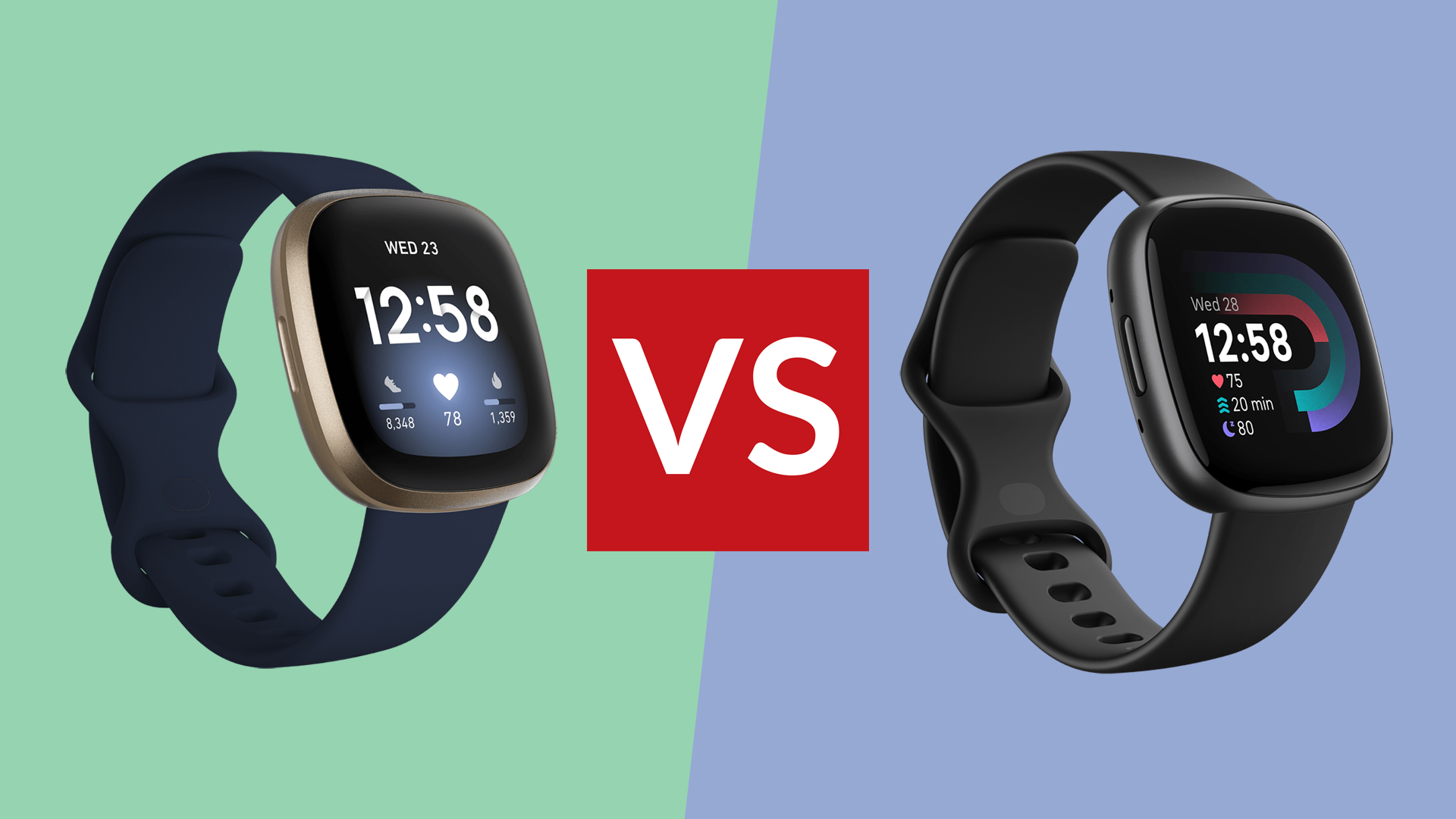Fitbit Versa 3 vs Versa 4 – Which is the better smartwatch?
How does Fitbit’s new premium smartwatch compare to its predecessor?

Fitbit Versa 3 vs Versa 4: which is the better smartwatch? Fitbit recently unveiled the Versa 4, the wellness giant’s latest fitness-focused smartwatch that offers over 40 exercise modes, real-time stats, and built-in GPS. While this is a pretty good package of features at this price point, we ask if it’s still worth considering the wearable’s cheaper predecessor, the Versa 3.
Launched over two years ago, the Fitbit Versa 3 offers a similar suite of health-tracking tools and standard smartwatch fare, but is it cheap enough to warrant missing out on the latest tech? Or are you better off investing a little more money in the Fitbit Versa 4? Which of the two is the best Fitbit? This versus review will answer this very question, helping anyone who is looking to purchase a Versa device to decide which model is right for them.
Fitbit Versa 3 vs Versa 4 – Price and availability
Launched way back in the height of the pandemic during the Summer of 2020, the Fitbit Versa 3 is now at its lowest-ever price, available from Fitbit UK, Fitbit US and Fitbit AU for £170/$200/AU$300. Even for its age, the price of the Versa 3 and its feature set are still pretty competitive when compared to its current-day rivals.
Fitbit’s latest edition of the Versa is priced at £200/$230/AU$380, which is only marginally more expensive than its predecessor. Available from Fitbit UK. Fitbit US and Fitbit AU, as of 30 September 2022, the Versa 4’s price point manages to undercut most of those of its major rivals, including Samsung, Garmin, and Apple.
As for colourways, the Versa 3 is available in black or gold with options for navy, pink, or black bands. The Versa 4, on the other hand, comes in either graphite, silver, or copper rose aluminium with a choice of black, blue, pink or red bands. There are no LTE versions available of either watch, which is probably to help keep costs down. For the best prices, check out the widgets below or visit our best cheap Fitbit deals page.
Fitbit Versa 3 vs Versa 4 – Design
When it comes to design, Fitbit makes it pretty easy to decide which Versa device to go for. Why? Because they’re pretty much identical to look at, so you haven’t really got anything to choose from. While both watches include the classic square display with friendly rounded edges and a nice and clear AMOLED screen, there are a few differences, however.
The major one is the presence of a physical button. While present in the Versa 2 and Versa 3, the third generation dropped the button in favour of a capacitive groove. Clearly, Fitbit reckons users didn’t love this design change as the Versa 4 reintroduces the button, placing it a little further up the watch’s body, so it’s a little easier to access.
Get all the latest news, reviews, deals and buying guides on gorgeous tech, home and active products from the T3 experts
Other differences include a slightly thinner and lighter chassis in the Versa 4, which Fitbit claims should make for a generally more comfortable fit. The band mount is the same on both watches, though, and you can easily interchange them between both the Versa 3 and 4, which is great news for those looking to upgrade.

The Fitbit Versa 4 now has a physical button
Fitbit Versa 3 vs Versa 4 – Features
In terms of feature set, the Versa 3 was the most significant generational upgrade the Versa series had seen, boasting a whole new OS design, built-in GPS and an upgraded heart rate sensor. While this made for an awesome lineup of features for those in the market for an Android smartwatch, it’s been over two years since the Versa 3 hit the shelves, so one would expect even more from the Versa 4.
The fourth-gen Versa retains all of the features of its predecessor alongside some significant software upgrades. However, it misses out on some key features, such as WiFi and third-party app support. The Fitbit OS has been given a major revamp in the Fitbit Versa 4. Thanks to Fitbit's integration into the broader Google ecosystem, the Versa 4 sports Wear OS-influenced tiles instead of the 'classic' layout of the Fitbit Versa 3.
Other fourth-gen improvements over the Versa 3 include 20 new exercise modes such as weight-lifting, dancing, CrossFit, and HIIT. The Versa 4 also supports Fitbit's new Premium feature called Sleep Profile, which monitors 10 sleep metrics, tells users what kind of sleeper they are via the Fitbit Sleep Animal feature, and offers advice on how to improve sleep quality.
And what about battery life? Both the Fitbit Versa 3 and Versa 4 are expected to offer about the same performance in that respect. Fitbit claims the devices will give users up to six days of power per charge or a full day’s worth from a 12-minute juice.

Until the price of the new watch stars dropping, you're better of getting the Fitbit Versa 3
Fitbit Versa 3 vs Versa 4 – Verdict
The Fitbit Versa 3 and Versa 4 might look almost identical at first glance. The new physical button, the abundance of new sports modes, and the updated user interface of the Versa 4 might make it look like the latest Versa is worth the upgrade. However, it's worth noting that although you get all the extra features, you also miss out on WiFi, third-party apps, music control and even access to Google Assistant by getting the new watch.
If you’re already a proud owner of the Versa 3, we don’t think there are enough differences to warrant an upgrade, as the devices still perform pretty similarly day-to-day. Once the price of the Fitbit Versa 4 starts dropping – which should start happening sooner rather than later – you might want to consider the new watch. Until then, you're better off investing your money in the Fitbit Versa 3.

Lee Bell is a freelance journalist and copywriter specialising in all things technology, be it smart home innovation, fit-tech and grooming gadgets. From national newspapers to specialist-interest titles, Lee has written for some of the world’s most respected publications during his 15 years as a tech writer. Nowadays, he lives in Manchester, where - if he's not bashing at a keyboard - you'll probably find him doing yoga, building something out of wood or digging in the garden.
